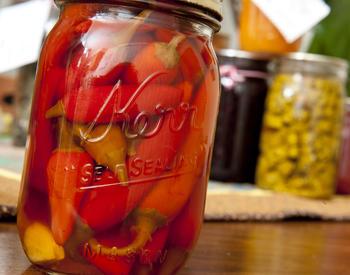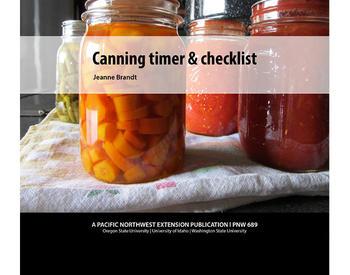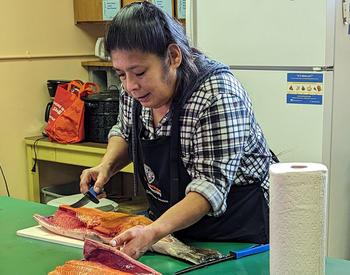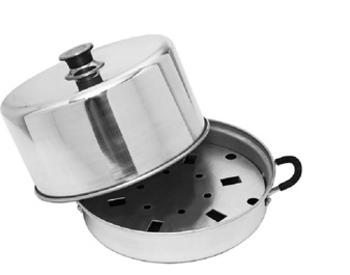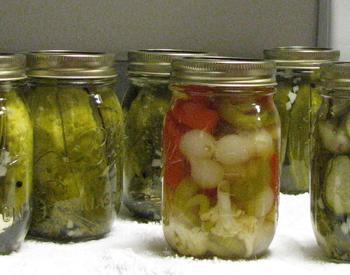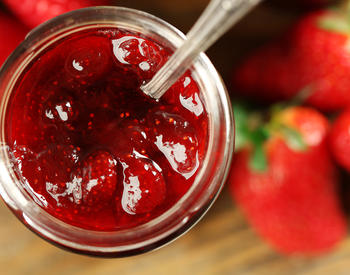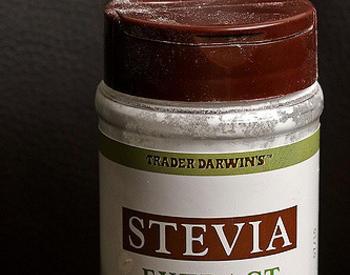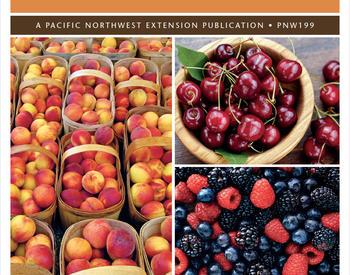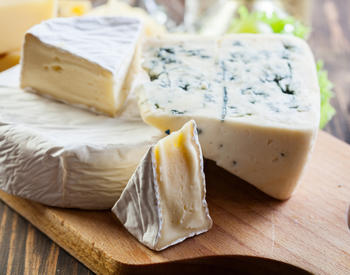Download this publication as a PDF
Flavored vinegars are easy and fun to make at home. They can be used in marinades, cooked dishes, salad dressings and even in beverages. The vinegars can be made with fresh, frozen or dried herbs, garlic, peppers and onions as well as fresh or frozen fruits.
Equipment needed
Use glass, food-grade plastic or crockery containers to make the vinegars. (Recycled vinegar, wine, sauce, fruit and marinade bottles are popular.) Wash thoroughly with warm soapy water and then sterilize the containers. To sterilize, place bottles in a pan of hot water, bring to a boil and gently boil for 10 minutes. Remove jars from boiling water and place inverted on a clean towel to dry. It is best to use non-corrosive lids or corks to seal the bottles.
Vinegar
Several kinds of vinegars can be used depending on the flavor that you are trying to achieve. Sometimes a combination of different vinegars can be used as the base for a uniquely flavored product. Try different vinegars with different flavorings. Work in small batches so you can decide which one you like best.
- Distilled white vinegar — Clear in color with a sharp acidic taste. It is a good choice for delicate-flavored herbs.
- Apple cider vinegar — Milder in taste than distilled white vinegar. The amber color may not be as desirable for light-colored fruits, vegetables and herbs. It blends well with dark berries.
- Wine vinegars — Several flavors on the market. They are more expensive than the distilled and cider vinegars but make very smooth-flavored products.
- Rice vinegar — Mild and slightly sweet in flavor.
Caution: Wine and rice vinegars contain some proteins that promote bacterial growth if the vinegars are not handled and stored properly. For added safety, use only commercially produced vinegars.
Flavorings
- Herbs and edible flowers — A variety of herbs and edible flowers can be used to make flavored vinegars — either by themselves or in combinations. Popular herbs and flowers include mint, basil, tarragon, dill, oregano, chives, chive blossoms and nasturtiums. Use about 3–4 sprigs of fresh herbs, ¾–1 cup loosely packed flower blossoms or 3 tablespoons dried herbs for each pint of vinegar. For added flavor, chop, bruise or freeze herbs before adding to vinegar.
- Fruits — Fruits can make special flavored vinegars with many uses from vinaigrettes and marinades to refreshing drinks. Especially flavorful fruits include raspberries, strawberries, blueberries, cranberries, blackberries and pineapple. Orange and lemon peel can be added. Use 2 cups of fruit per pint of vinegar. Along with the fruit, additional flavorings can be used, such as cinnamon sticks, whole cloves, allspice, mint, or lemon or orange peels. For more flavor, freeze the berries first.
- Vegetables — Vegetables can be added to herb vinegars or used themselves for special flavoring. Garlic, onion, jalapeno and other hot peppers are popular in flavored vinegars. These vegetables, along with citrus peels, can be threaded onto a bamboo skewer and inserted in the vinegar jar. This way they can easily be removed when the desired flavor is reached. To impart more flavor, slit the peppers, peel garlic and slice onions before adding to the vinegar.
Making the vinegars
- Herb- and or vegetable-flavored vinegars — Wash herbs and vegetables and pat dry with a clean towel or paper towel. Put the desired amount of herbs and/or vegetables into a sterilized glass jar and then fill the jar with the vinegar of your choice. Some people prefer to heat the vinegar to 190–195ºF, and then pour the hot vinegar over the herbs. Others like the flavor better when cold vinegar is added. Either way, pour the vinegar over the herbs or vegetables and cover jar with a non-corrodible lid. Let vinegar condition in a cool dark place for 3–4 weeks to develop flavor.
- Fruit-flavored vinegars — The fruit-flavor vinegars can be a mixture of fruits with some herbs. Place fruit or the peel of one lemon or orange and herbs, if desired, in a sterilized jar. Add vinegar. Let steep until desired flavor is reached, usually 2–4 weeks.
- Testing vinegar flavor — It will take at least 10 days for most flavors to develop and about 3–4 weeks for optimum flavor. The desired flavor is a matter of personal taste. To test for flavor development, place a few drops of vinegar on a piece of plain white bread and taste. Or use a sugar cube and dip it into the vinegar and suck the flavor from the cube. If the flavor has developed to your satisfaction, you are ready to strain the vinegar. If flavor seems too strong, you can dilute it by adding additional “base” vinegar. If the flavor is weak, let it steep longer.
- Straining the vinegar — After the desired flavor is reached, strain the vinegar through a damp cheesecloth, jelly bag or coffee filter one or more times until the vinegar shows no sign of cloudiness. Discard the herbs, vegetables or fruit. Pour strained vinegar into clean sterilized jars and cap tightly. A few sprigs of fresh herbs, vegetables or a few pieces of whole fruit or berries can be added to vinegar before sealing.
Labeling
After the vinegars are cured and filtered, it may be difficult to know which flavors were used. It’s important to label with type of base vinegar used, flavoring and date.
Storing vinegar
Keep vinegars in tightly sealed bottles. Store in a cool, dark place. Refrigeration is best for retention of freshness and flavors. For best quality, use within 4–6 months. After six months, even if there is no sign of spoilage, taste the vinegar before using to make sure the flavor is still good. If flavored vinegar molds or shows signs of fermentation such as bubbling, cloudiness or sliminess, it should be discarded without tasting.
Using flavored vinegars
Flavored vinegars can add variety to your meals. Here are a few to try. Libraries, bookstores and the internet will have additional ideas.
- Tarragon — Salad dressings, salads, sauces and pot roast.
- Basil — Cooked greens, coleslaw, sauces, meats and vegetables.
- Mixed herbs — Salad dressings, sauces, meats and vegetables.
- Nasturtium blossoms/garlic — Salads, marinades and pickled fresh cucumbers.
- Garlic/cilantro (coriander) — Chutney, meat, lamb and Middle Eastern dishes.
- Mint — Lamb, dips or in vegetables and salads.
- Rosemary — Salads and meat dishes.
- Fruit flavored — Salad dressings, marinades, lemon-flavored soda and ice water.
Note: Flavored herb vinegar should not be used for pickle-making unless it has 5% acidity level. If the flavors become too strong, dilute flavored vinegars with more of the same “base” vinegar. If the vinegars are too tart, add a little sugar to enhance the flavor and reduce the tartness.
Significance of safety concerns ("So Easy to Preserve" – University of Georgia – Bulletin 989)
As long as clean and high-quality ingredients (vinegar and herbs, vegetables or fruits) are used, the greatest concern with homemade flavored vinegars should be mold or yeast and then having to throw out your product. If your flavored vinegar starts to mold at any time or show signs of fermentations such as bubbling, cloudiness or sliminess, discard the product and do not use any of it that is left.
Some harmful bacteria may survive and even multiply slowly in some vinegars. It is important to follow directions carefully, store flavored vinegars in the refrigerator or cool places, and work in a very clean area with sanitary utensils. Also be sure hands are very clean while you work!
Source: OSU Master Food Preserver Program
